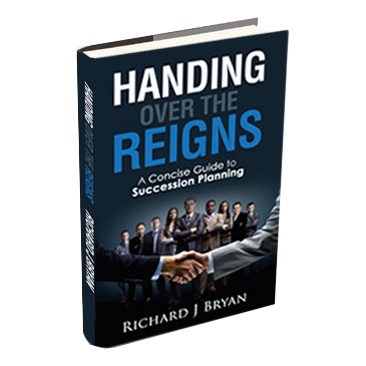As I navigate the leadership keynote speaker circuit, the question of hiring best practices naturally comes up quite a bit, and the age-old debate of “train vs. hire” is often at the heart of the discussion. Of course, there are pros and cons to either side, and I always enjoy hearing people’s first-hand experiences with finding the best business talent for different kinds of enterprise, and companies of varying sizes. With this in mind, here’s what worked—and what didn’t—for my car dealership business. I hope it helps you get your growing team on track!
Industry Track Record, or Transferable Skills?
In the early 1990s, I worked for a very successful car dealership in Fairfax, Virginia. While I was there, they were selling 500 to 600 new cars per month—statistics which are still impressive, nearly 30 years later! As soon as I joined, I noticed that the company had an incredible attention to detail, as well as a few hiring best practices that differentiated them from their competition…giving them a distinct advantage in their local market.
One of their most significant differentiators was that they rarely poached automotive sales staff from other local dealerships—preferring, instead, to look for people with the right attitude and certain valuable transferable skills. They had great success with retail staff from nice department stores, servers from upscale restaurants, and even former bank employees who understood the deeper financial details of automotive sales. The common thread, I believe, was a dedication to truly gracious service. While there are many details of customer experience that can be trained, this ultimately cannot.
Once they identified these new “service stars,” the company invested in two full weeks of intensive classroom automotive sales training with an independent expert. Then, following this training course, each new employee was personally mentored by an experienced sales manager over the course of a three-month probationary period. By the end of this period, it was usually obvious to everyone who was (or wasn’t) a good fit for the company.
“Training Up” Employees from Within, via Mentorship
When I went on to lead my own group of car dealerships, I leveraged this approach—but with my own unique spin. When I buddied up my newbies with experienced sales executives, I also had them share the sales commission. This motivated the mentor to pass along their knowledge, while simultaneously encouraging the trainees to dive right into those closings.
In my travels on the leadership keynote speaker circuit, I am often asked to discuss the pros and cons of “training up” your team internally. Of course, there are always risks to any approach! In this case, you’re investing time and money in an asset that’s unproven. These employees are naturally less useful to you during this educational interlude, and they could theoretically take the new knowledge you’ve bestowed upon them to another job.
On the upside, though, the financial value of internal training programs has been widely studied. Here are just a few compelling statistics backing up this practice:
Companies with formalized internal training programs:
- Offer a 218% increase in income per employee
- Enjoy 24% higher profit margins than those without
- Experience a significant positive impact on staff retention
Also of note: studies show that nearly a quarter of all staff turnover occurs within the first month and half of employment—and one in four of employees who leave cite lack of development opportunities as their reason for departure. In our company, internal training started right away, and generally gave us a strong ROI across the business.
But the approach I mentioned above was particularly successful in the sales department, where we were able to reduce annual staff turnover from 30% to 12%—while significantly improving customer satisfaction and increasing our overall profitability.
When to Hire from Outside—and When to Let Go
I am often asked, “What’s your secret to finding great employees?” And my answer is always the same: “An open mind.” I’ve definitely seen first-hand the value of shepherding current employees into new roles with training and mentorship. But I’ve also learned that one won’t always have the perfect potential fit for every role, magically waiting in the wings. And, if I learned anything from my time at the Fairfax dealership, it was the inherent value of finding one’s own “diamond in the rough.”
Early in my leadership career, I inherited a car salesman with decades of experience…and a well-documented attitude problem. I was still in my 20s at the time, so this employee far outpaced me in age and expertise. On paper, he seemed like an asset to the company—but in reality, his intimidating presence and blatantly insubordinate manner was an irreparable culture drain, both for the sales department and the whole company.
Still, it was shocking when my mentor, Frank, suddenly fired him—removing a “culture canker,” yes, but also robbing me of a key revenue driver! That’s why, whilst stroller shopping with my wife the following week, I got a very interesting idea. Working with a wonderful salesperson, Louise, on finding the perfect “vehicle” for our baby, we both marvelled at her grace and sophistication. Why, I wondered, wouldn’t these skills transfer to larger vehicles?
I thought about it for a week, and then went back to ask Louise to take a chance with us. There were lots of reasons she could have refused: lack of product knowledge, dearth of automotive experience, no existing customer base, and joining an all-male team in a male-dominated industry. But in the end, Louise’s natural feel for what all customers want—to be listened to, rather than talked at—won out. With proper mentoring and support, she went on to become one of our most productive (and beloved) team members.
Parting Shot: My 7-Step Hiring System
I think one of the most important things when hiring from outside is to admit, quickly, when you’ve got it wrong. You may already be familiar with Topgrading, a hiring system designed to weed out low-performing, dishonest candidates before wasting valuable time on the interview process—leaving behind only the most honest, motivated high performers. Over the years, I have gradually built a streamlined 7-step system for hiring A-players, loosely based on the Topgrading model. Sign up here for my quarterly newsletter to gain access to this tried and tested system.
Want more personalized tips for finding the right talent for your business? Sign up for our mailing list to be notified of upcoming leadership retreats.
Related Topics:
Business Contingency Planning: What, Why + How
Stepping Out, Not Down: Why Your Aging CEO Won’t Retire
The Role of the Board During Family Business Succession


